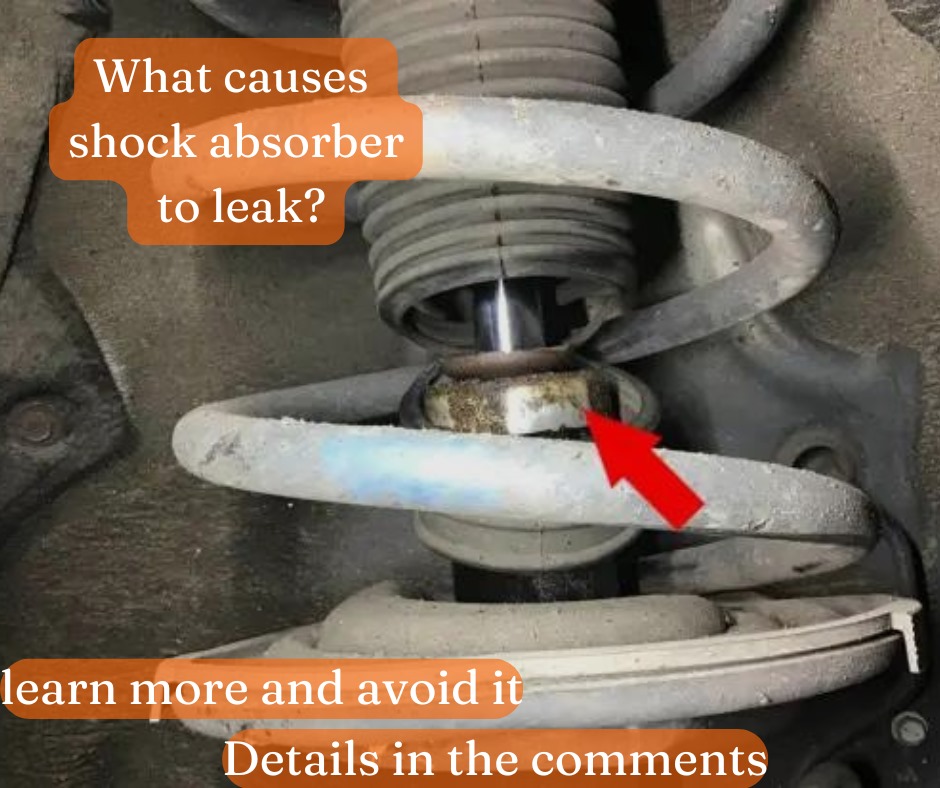Common Causes of Shock Absorber Leaks

The mechanics of your vehicle as we explore the top reasons behind the leaking of shock absorbers, ensuring a smoother ride and longer vehicle life.
Shock Absorber Functionality and Importance
Shock absorbers are a critical component in a vehicle's suspension system, tasked with controlling the impact and rebound movement of your car's springs and suspension. They ensure that the vehicle’s tires remain in contact with the road surface for the most time possible, providing optimal grip and stability. The importance of shock absorbers cannot be overstated; they not only contribute to a vehicle's comfort but also significantly influence its handling and safety. Without properly functioning shock absorbers, a vehicle can experience increased stopping distances, reduced control during evasive maneuvers, and an overall degradation in ride quality.
Understanding the function of shock absorbers helps in diagnosing the issues that can lead to leaks. Inside a shock absorber is a piston that moves through a cylinder filled with hydraulic fluid. Leaks occur when this fluid begins to escape from the shock absorber's casing, often signaling wear or damage to internal components such as seals or the casing itself.
The Impact of Wear and Tear on Shock Absorbers
Regular wear and tear is an inevitable part of a shock absorber's life cycle. Over thousands of miles, the constant cycling of the piston through the shock absorber's fluid begins to degrade the internal seals. As these seals wear down, their ability to contain the hydraulic fluid diminishes, leading to potential leaks. In addition, the shock absorber's rod can develop pits or scratches, which further compromise the integrity of the seals.
The degradation of the aforementioned components is accelerated by exposure to road salt, dirt, and other corrosive materials. The longevity of shock absorbers can vary depending on driving habits, road conditions, and the quality of the shock absorbers themselves. Manufacturers typically recommend inspecting shock absorbers at regular intervals, which can help catch wear and tear early before it leads to leaks and further complications.
How Improper Installation Contributes to Leaks
While it may seem straightforward, the installation of shock absorbers requires precision and attention to detail. Improper installation can quickly lead to leaks due to misalignment, inadequate tightening of bolts, or damage to the shock absorber during the installation process. An incorrectly installed shock can experience undue stress on its components, causing premature wear and ultimately, fluid leaks.
It is essential to follow the manufacturer’s guidelines during installation and to use the correct tools to ensure that the shock absorbers are fitted properly. Torque specifications must be adhered to, and all components should be inspected for damage or deformities before installation. If you're not experienced with vehicle maintenance, it's recommended to have a professional perform the installation to avoid any issues that could lead to leaks.
The Role of Accidents and External Damage
Accidents and external damage can cause immediate and obvious damage to shock absorbers, leading to leaks. Impact from collisions, driving over large potholes, or hitting curbs can bend or puncture the shock absorber body, which compromises the seal and allows fluid to escape. Even minor accidents can cause misalignment or subtle damage that may not be immediately apparent but can result in leaks over time.
It's crucial to inspect your vehicle’s shock absorbers after any incident that could have caused damage. External damage may also come from road debris, which can strike the shock absorber with enough force to create dents or holes. Regular visual inspections can help identify any new damage and address it before it leads to a leak or affects the vehicle's handling and safety.
Preventative Measures and Regular Maintenance Tips
The best way to prevent shock absorber leaks is through regular maintenance and inspection. This includes checking for signs of wear, such as wet spots or drips on the shock absorber body, which can indicate a leak. Keeping your vehicle clean, especially in environments with road salt or grit, can help prevent corrosive damage to the shocks.
Additionally, being mindful of how you drive can extend the life of your shock absorbers. Avoiding potholes, slowing down over speed bumps, and general cautious driving will reduce the stress and potential damage to the suspension system. If you suspect a leak or notice a decline in ride quality, have your shock absorbers inspected by a professional mechanic as soon as possible. They can provide an accurate diagnosis and replace the shock absorbers if necessary, ensuring your vehicle continues to handle safely and comfortably.

 Loading..
Loading..